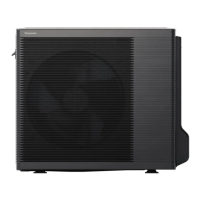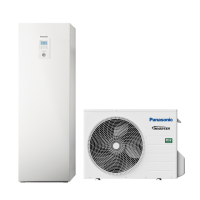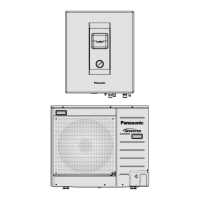Why is my Panasonic WH-UDZ05KE5 Heat Pump making a loud noise?
- CchenrySep 6, 2025
The loud refrigerant noise that continues for several minutes is caused by protection control during deice operation at outdoor ambient temperature lower than -10 °C.

Why is my Panasonic WH-UDZ05KE5 Heat Pump making a loud noise?
The loud refrigerant noise that continues for several minutes is caused by protection control during deice operation at outdoor ambient temperature lower than -10 °C.
What to do if my Panasonic Heat Pump operation in HEAT/COOL mode is not working efficiently?
If your Panasonic Heat Pump isn't heating or cooling efficiently, make sure you set the temperature correctly, close the panel heater/cooler valve, and clear any obstructions in the air inlet and air outlet vents of the outdoor unit.
Why is my Panasonic WH-UDZ05KE5 operation delayed a few minutes after restarting?
The delay after restarting your Panasonic Heat Pump is a protection mechanism for the compressor.
What does it mean if *1, *2 COOL mode is unavailable on my Panasonic WH-UDZ05KE5?
If *1, *2 COOL mode is unavailable on your Panasonic Heat Pump, the system has been locked to operate in HEAT mode only.
Why is there loud refrigerant noise for several minutes in my Panasonic WH-UDZ05KE5 Heat Pump?
The loud refrigerant noise in your Panasonic Heat Pump is caused by protection control during de-ice operation when the outdoor ambient temperature is lower than -10 °C.
What to do if the Operation LED is not lit on my Panasonic Heat Pump Remote Controller?
If the Operation LED is not lit or nothing is displayed on the Panasonic Heat Pump Remote Controller, check if the power supply is working correctly or if a power failure has occurred.
| Model | WH-UDZ05KE5 |
|---|---|
| Category | Heat Pump |
| Refrigerant | R32 |
| Type | Air-to-Water |
| Heating Capacity | 5.0 kW |
| EER | 3.8 |
Covers general warnings, power supply, electrical safety, unit care, and handling.
Details safety for R32 refrigerant, service procedures, leak detection, and component repair.
Outlines safe practices for refrigerant removal, charging, decommissioning, and recovery processes.
Explains various operating modes, icons, and temperature zone displays.
Details settings for room/tank heaters, sterilization, and system performance monitoring.
Details settings for bivalent connections, solar integration, and external controls.
Details the setup and configuration of various external meters for energy monitoring.
Lists common operating symptoms, their causes, and preliminary checks before calling service.
Provides a comprehensive list and explanation of system error codes.












